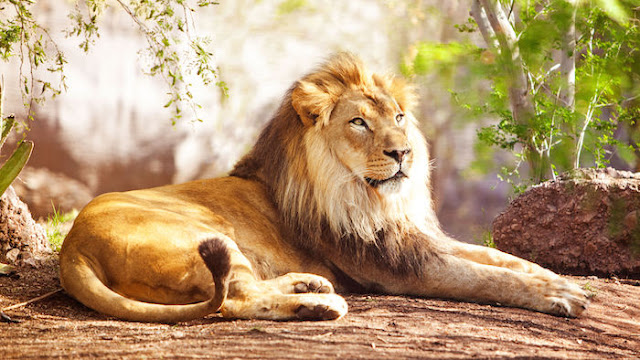Lion Life Cycle
Physical Description
Lions have strong, compact bodies and powerful forelegs, teeth, and jaws for pulling down and killing prey. Their coats are yellow-gold. Adult males have shaggy manes that range in color from blond to reddish-brown to black and also vary in length. The length and color of the mane is believed to be determined by such factors as age, genetics and hormones. Young lions have light spotting on their coats that will disappear as they grow up. Without their coats, lion and tiger bodies are so similar that only experts can tell them apart.
Native Habitat
Except for a small population of the Indian lion subspecies that remains in the Gir Forest of northwest India, lions now live only in Africa, from the Sahara's southern fringe to northern South Africa. They are absent from equatorial areas dominated by moist tropical forest. Lions inhabit a wide range of habitats, from open plains to thick brush and dry thorn forest, avoiding only wet tropical forest.
Food/Eating Habits
Lions eat primarily large animals, such as zebra and wildebeest, weighing from 100 to 1,000 pounds (45 to 453 kilograms). In times of shortage, they also catch and eat a variety of smaller animals from rodents to reptiles. Lions steal kills from hyenas, leopards and other predators, but may also lose their catches to hyena groups. Lions may also feed on domestic livestock, especially in areas near villages.
The Smithsonian's National Zoo's lions eat ground beef, which is commercially produced to meet the nutritional needs of carnivores. Twice a week, they receive knucklebones or beef femurs and once a week they receive rabbits, which exercise the cats' teeth and jaws.
Social Structure
Lions are the world's most social felines. They live in groups of related females called prides, which may comprise several to as many as 40 individuals, including adults, sub-adults (2 to 4 years old) and cubs, plus one or more resident males. Abundance of prey availability plays a significant role in the size of a lion pride. Pride mates associate in sub-groups within the pride.








No comments: